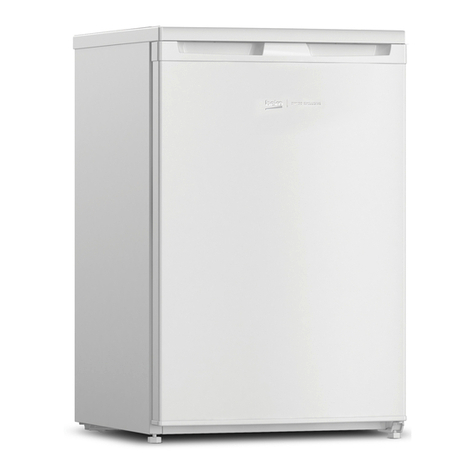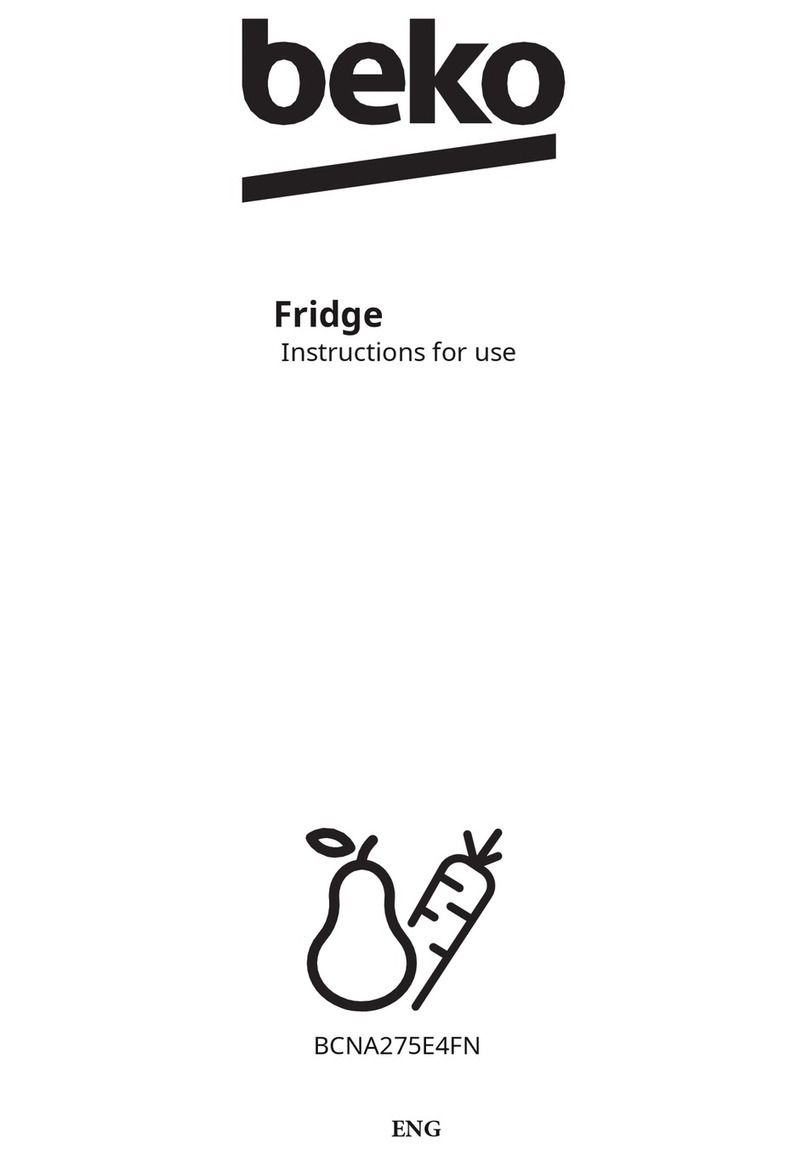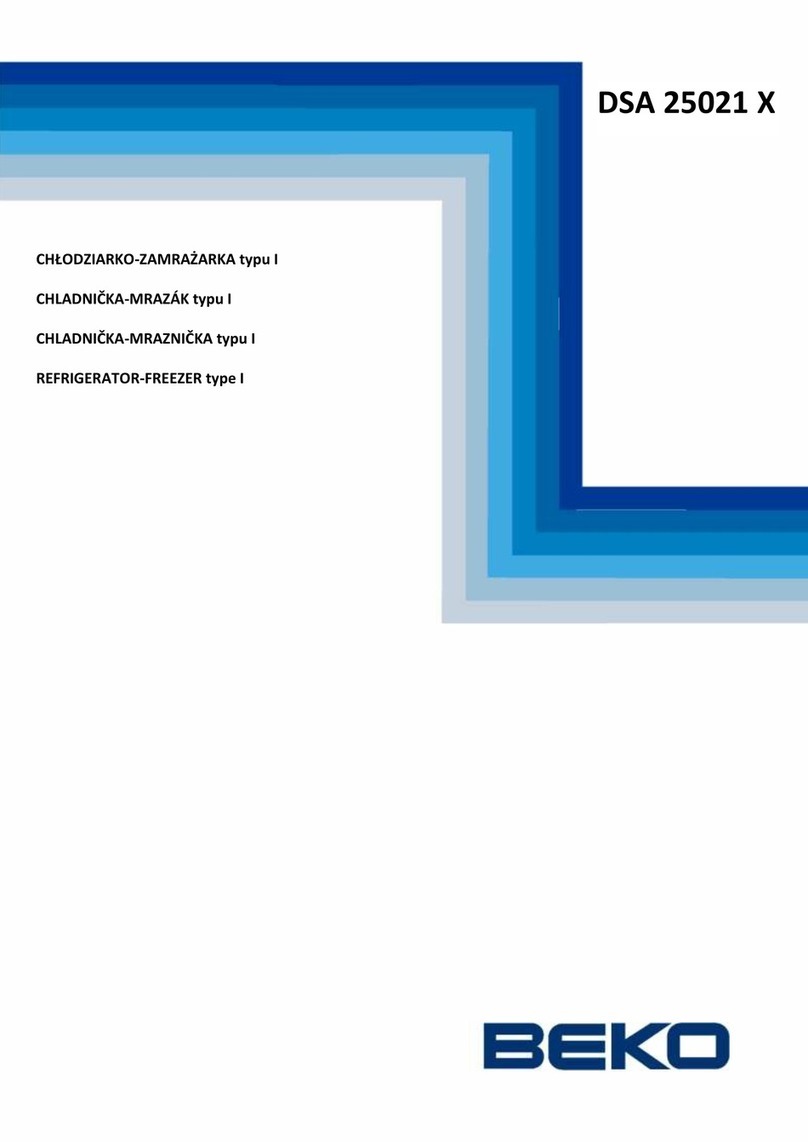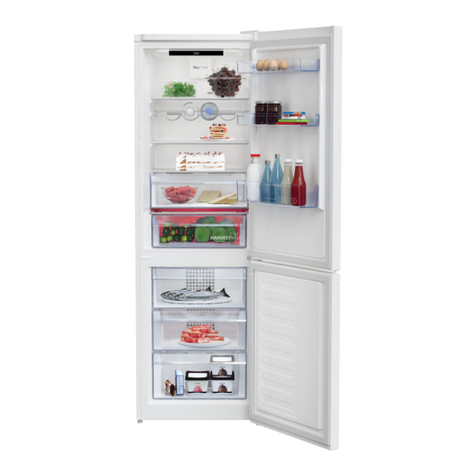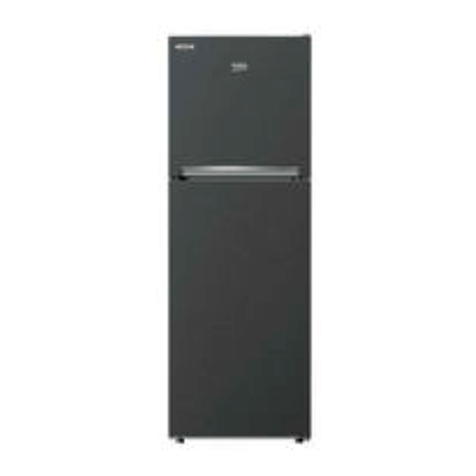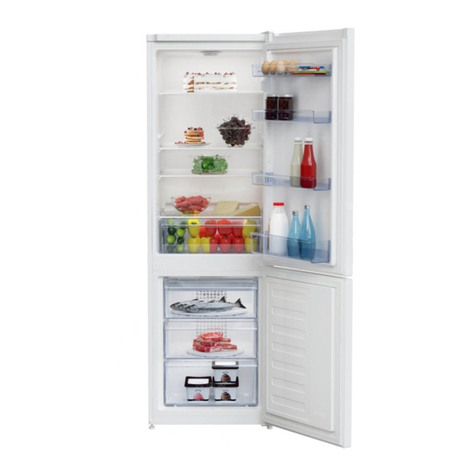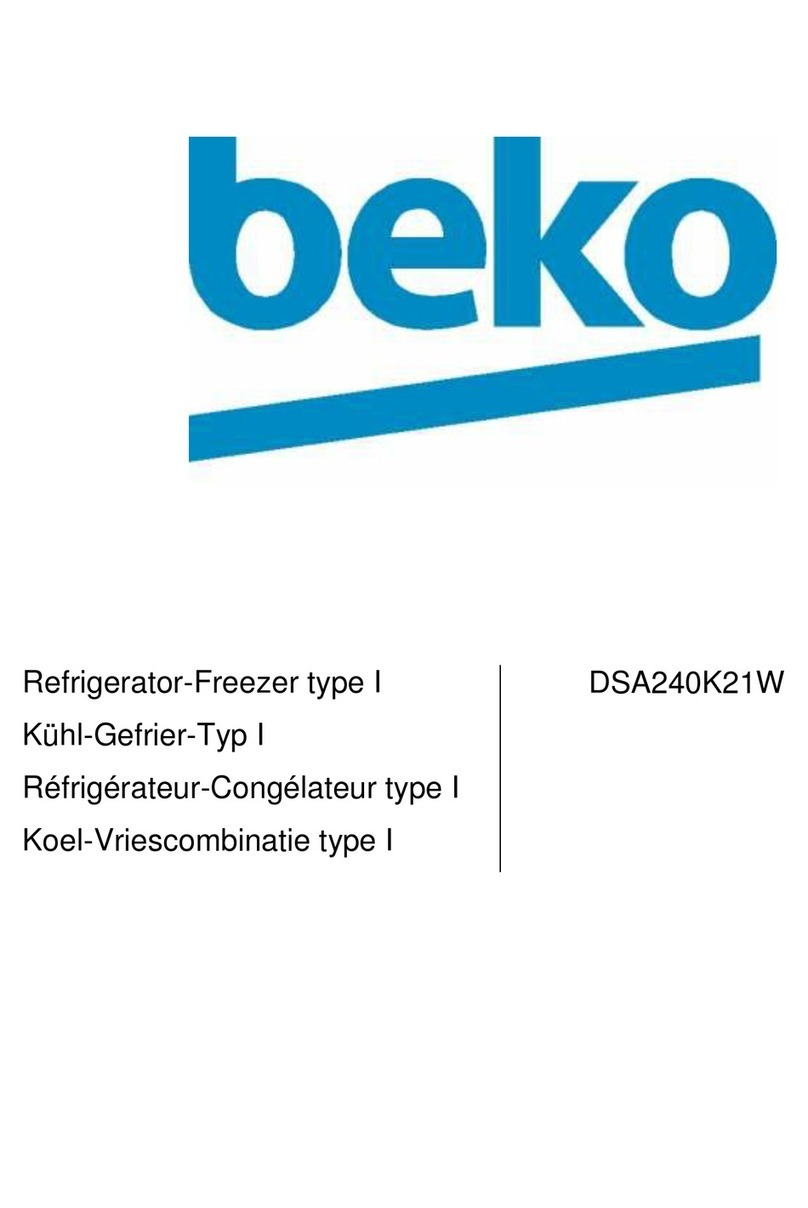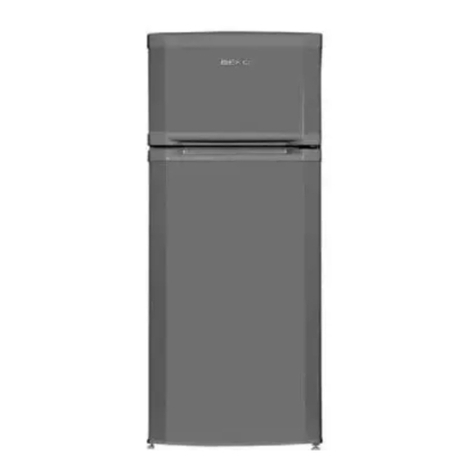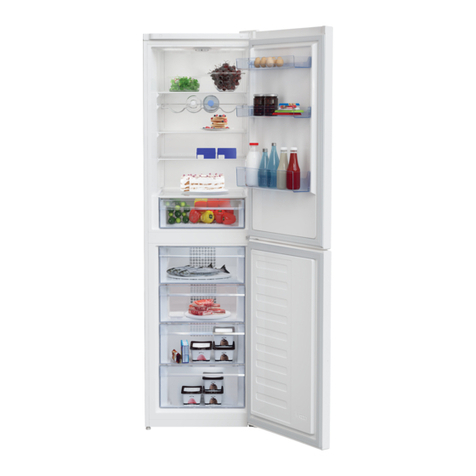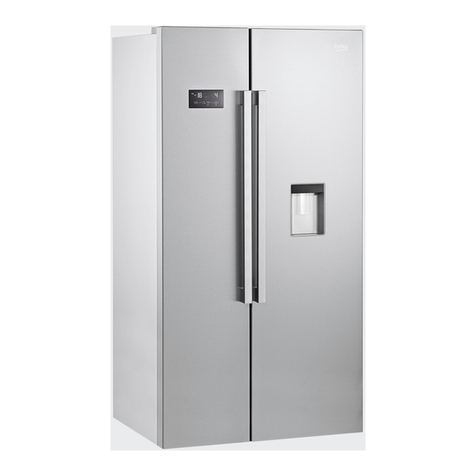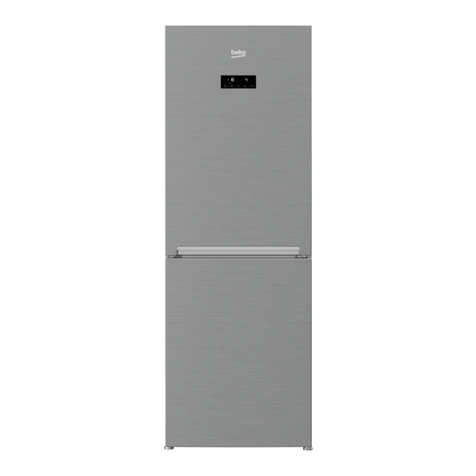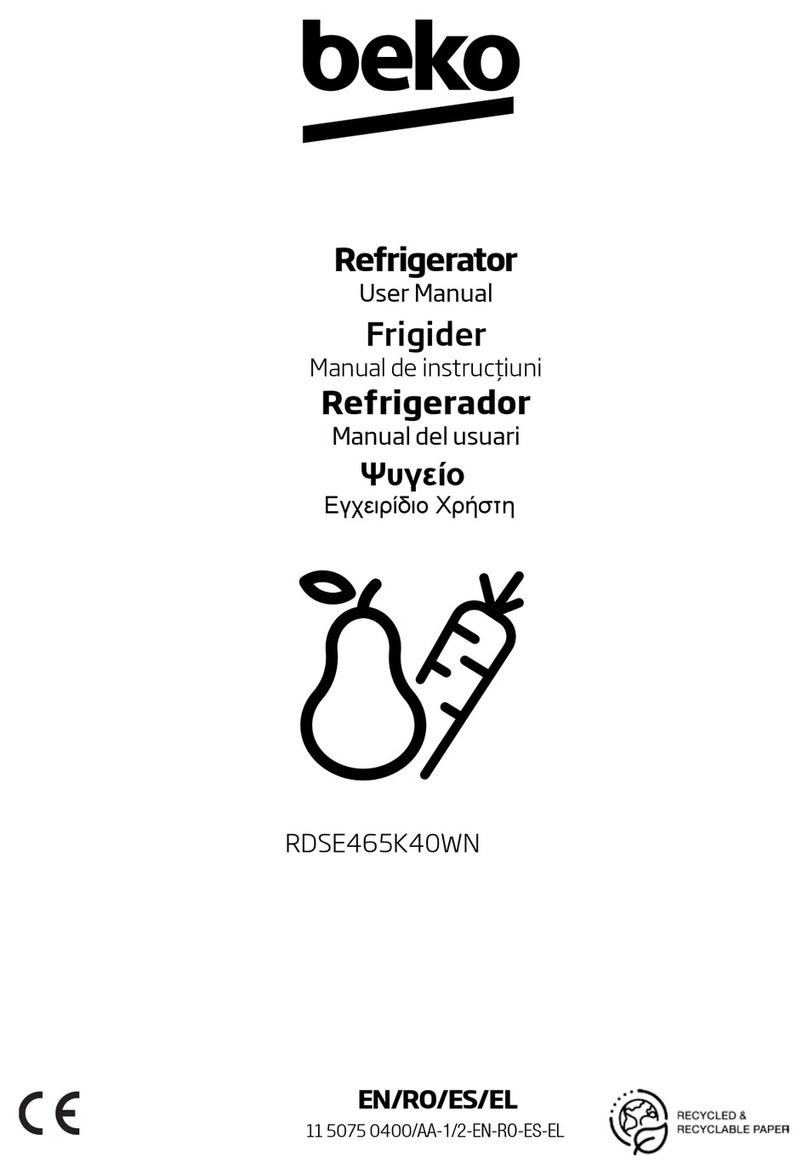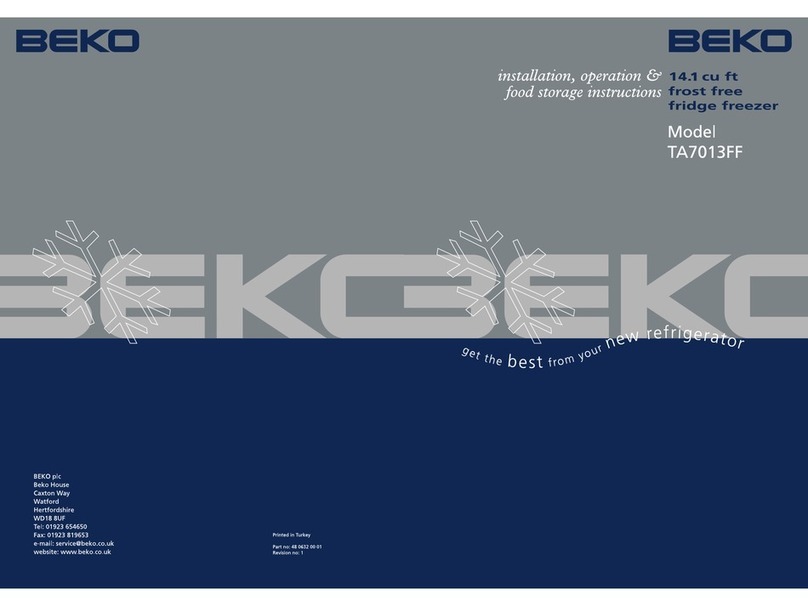
EN
6
• Materials that require certain
temperature conditions such as
vaccine, temperature sensitive
medicines, scientific materials etc
should not be kept in refrigerator.
• If refrigerator will not be operated for
an extended period of time it should
be unplugged. A problem in electrical
cable insulation may result in fire.
• The tip of the electric plug should be
cleaned regularly otherwise it may
cause fire.
• The refrigerator may move when the
adjustable feet is not positioned firmly
on the floor. Using the adjustable feet
you can unsure that the refrigerator is
positioned firmly on the floor.
• If the refrigerator has door handle
do not pull the refrigerator via door
handles when moving the product as
it may disconnect the handle from the
refrigerator.
• If you must operate your appliance
adjacent to another refrigerator or
freezer, the distance between the
appliances must be at least 8 cm.
Otherwise condensation may occur
on the side walls facing each other.
• Water mains pressure must not be
below 1 bar. Water mains pressure
must not be above 8 bars.
• Use only drinkable potable water.
Child safety
• If the door has a lock, the key should
be kept away from reach of children.
• Children should be supervised to
ensure that they do not play with the
appliance
HCA Warning
If your product is equipped with
a cooling system that contains
R600a:
This gas is flammable. Therefore, pay
attention to not damaging the cooling
system and piping during usage and
transportation. In the event of damage,
keep your product away from potential
fire sources that can cause the
product catch a fire and ventilate the
room in which the unit is placed.
Ignore the warning if your product
is equipped with a cooling system
that contains R134a.
You can see the gas used in
production of your product on the
rating plate that is located on the left
inner part of it.
Never dispose the product in fire.
Things to be done for energy
saving
• Do not leave the doors of your
refrigerator open for a long time.
• Do not put hot food or drinks in your
refrigerator.
• Do not overload your refrigerator so
that the air circulation inside of it is not
prevented.
• Do not install your refrigerator
under direct sunlight or near heat
emitting appliances such as ovens,
dishwashers or radiators.
• Pay attention to keep your food in
closed containers.
• Maximum amount of food can be
put in your refrigerator’s freezer
compartment when the freezer
compartment shelf or drawer
is removed.Declared energy
consumption value of your refrigerator
was determined when the freezer
compartment shelf or drawer was
removed and under maximum
amount of food load.There is no risk
in using a shelf or drawer according
to the shapes and sizes of the foods
to be frozen.
